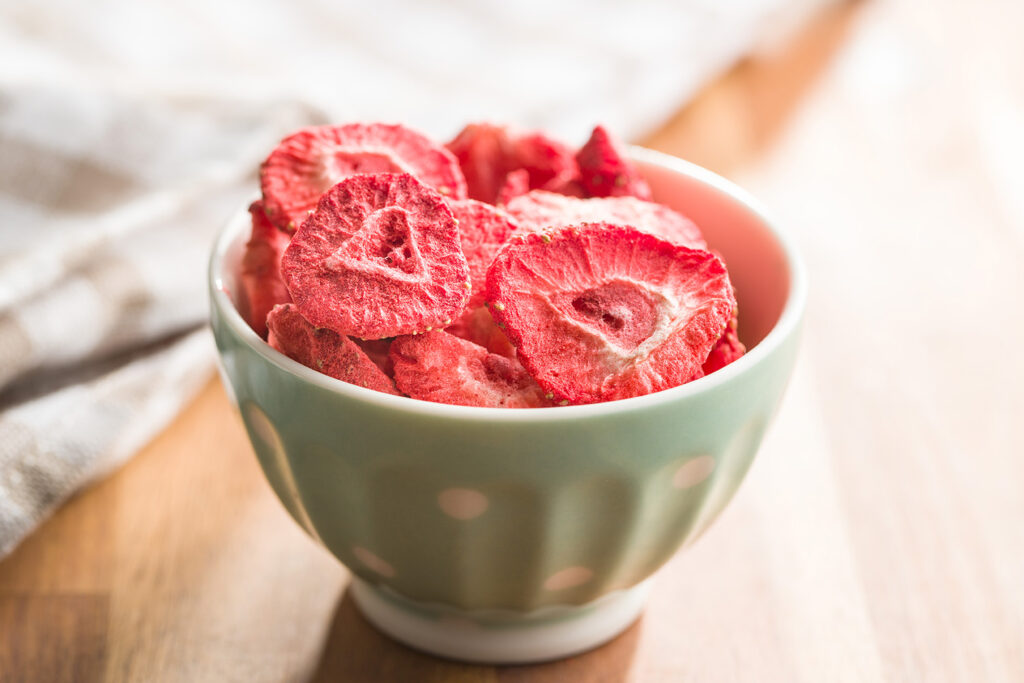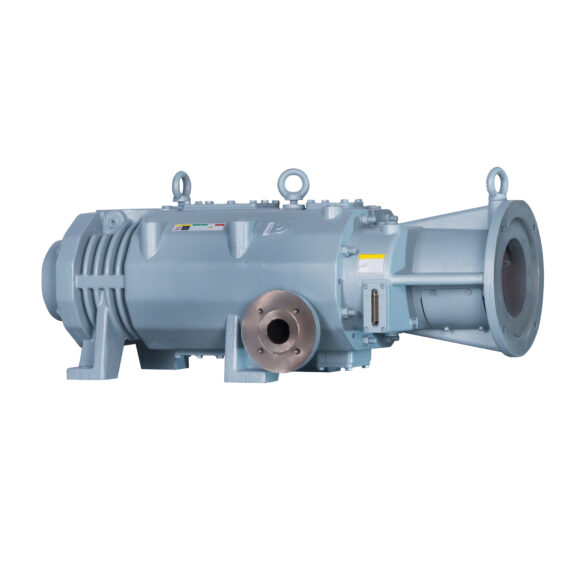
Freeze Drying for Dry Screw Vacuum Pumps
Freeze drying, or lyophilization, is the process by which hydrated products are frozen so that their moisture content can be sublimated, effectively drying the product. Without a vacuum pump to evacuate the lyophilization chamber, this easy and popular process is impossible.
The freeze drying technique has been used as a preservative method for organic compounds for several decades. Moisture retained in animal or plant matter encourages the growth of bacteria, decaying the product and decreasing the marketability of the product. This is also applicable in research settings, where biological samples may erode or decay in the presence of water. In such cases, drying techniques are employed. Reducing the moisture content of the sample or product provides less reactant for bacteria to enact their degradation process upon said product or sample.
To begin, a lyophilization chamber is set up in connection to a condenser and vacuum pump. Depending on the size of the chamber, it can be loaded with batches or individual samples or products. Once the chamber is properly loaded, the temperature of the chamber is lowered using a heat exchanger. This is done to freeze the moisture because in the liquid and saturated gas phases, water exhibits a higher propensity for adsorption. If the moisture chemically reacts, adsorbs, or adheres to the product, then it becomes more difficult to remove and the shelf life of the resulting yield shortens. A vacuum pump is then used to evacuate the chamber at a controlled rate. The goal is to force the moisture into sublimation, avoiding evaporation to prevent adsorption and chemical reaction from product to hydrated product through the careful manipulation of both temperature and pressure. The temperature is held at a constant value while the chamber is evacuated. The ambient pressure of the chamber decreases until it is below that of the triple point of water or other solvent in the case of chemical laboratory research sample lyophilization. This allows for smooth transitioning from solid to liquid.
The rate at which the temperature is decreased to freeze the water content within the chamber load depends on the material being freeze-dried. Freezing the water at a slow rate causes the ice to form large crystals over time. This has certain benefits, as quickly freezing the moisture will result in smaller crystals that may tear at the load with its numerous sharp edges. However, once the large ice crystals are removed, large voids can be found within the remaining solid, compromising its structural integrity and possibly causing it to collapse, resulting in significant yield decreases and large portions of operation costs wasted.
Applications of Dry Screw Vacuum Pumps
The dry screw vacuum pump is often used for lyophilization in multiple different industries. In the pharmaceutical and chemical industries, the dry screw vacuum pump is used to supply sufficient vacuum levels for drying or preservation of heat-sensitive biological samples.
In the food industry, dry screw vacuum pumps are used for the drying and preservation of fruits, vegetables, herbs, spices, and various other kinds of produce. Occasionally the produce is freeze-dried for consumption in extraterrestrial travel for longer shelf life, while it is sold commercially and marketed with its freeze-dried form being the allure of the product. Spices are ground and freeze-dried to retain their shelf life as they are marketed as a convenient addition in home cooking, adding flavor with an already ground spice that will last for a long time. Fruits and vegetables are sometimes freeze-dried to a certain moisture content percentage for better shelf life in a home freezer, as well.
Advantages of Dry Screw Vacuum Pumps
The dry screw vacuum pump does not require any working fluid to operate. This means that there is no oil to maintain and change, no water supply lines running across the breadth of the pump, no filtration or preventative measure for discharge contamination, no surging operation cost from the constant need for a large supply of working fluid, and no need for proper treatment and disposal. Most importantly, there is no limitation of vapor pressure for the pump to operate off of, allowing it to reach high levels of vacuum. The levels of vacuum required for lyophilization are not near the ultimate vacuum level of the dry screw, so it can be operated at a lower recommended RPM. This is much better for the pump, slowing down wear and reducing the amount of maintenance and repair that would inevitably come with constantly running the pump at its maximum rated RPM. This maximum RPM operation also consumes large amounts of electricity, adding to operation costs, so reducing the operating RPM at which the dry screw is used for freeze-drying saves money and energy. The dry screw vacuum pump already exhibits a high suction capacity-to-power rating ratio, boasting a high energy efficiency, but its design can also be configured with variable pitching for even more energy savings, drastically cutting both operation costs and environmental impact.
NES Company Inc. is proud to offer our NSP dry double screw vacuum pump series. Complete with a selection of metallurgy and optional kits such as gas ballast kits, exhaust silencer kits, and spare parts kits, NES Company Inc. is committed to offering a tailor-made product for any industry and application, complete with kits to make simple DIY repairs smooth and quick.

